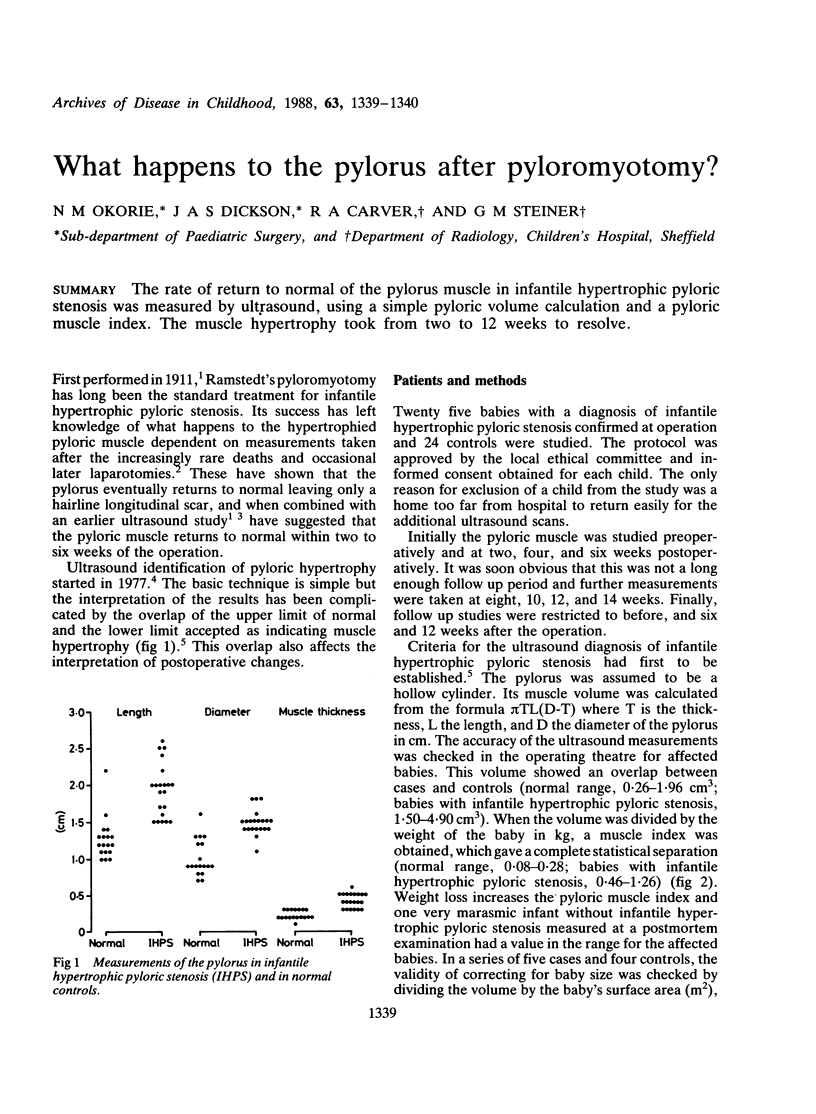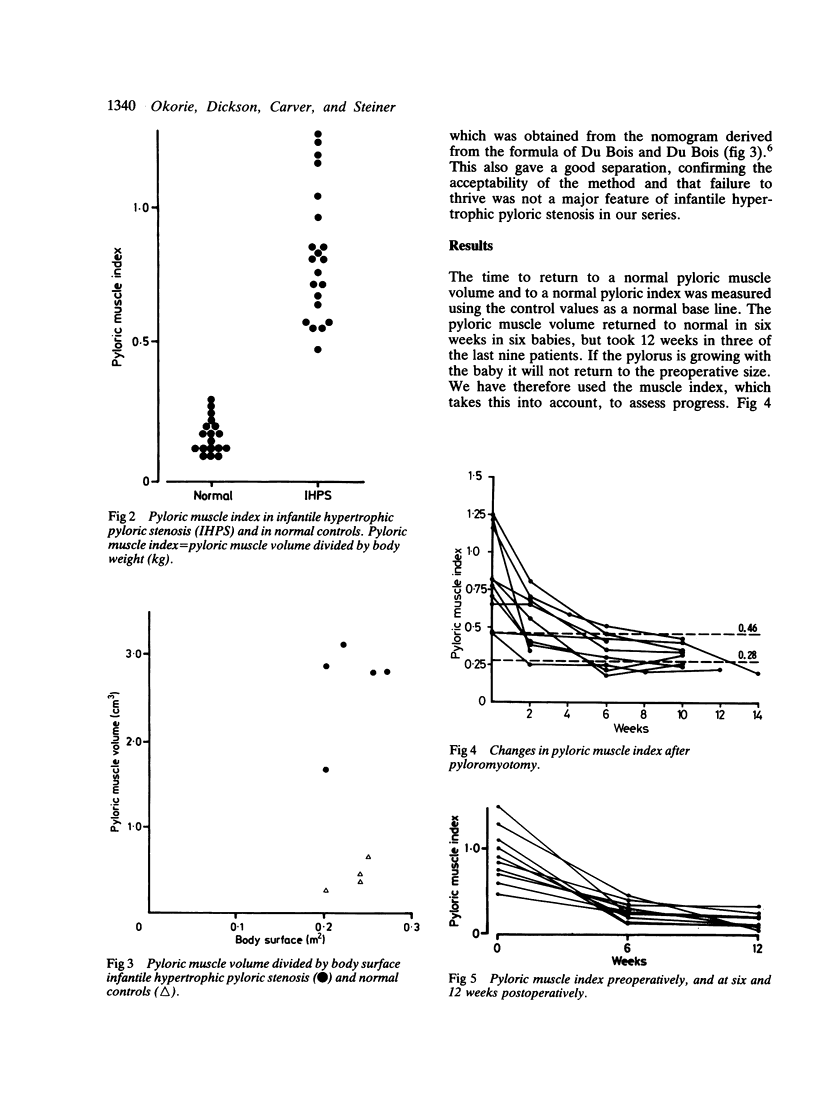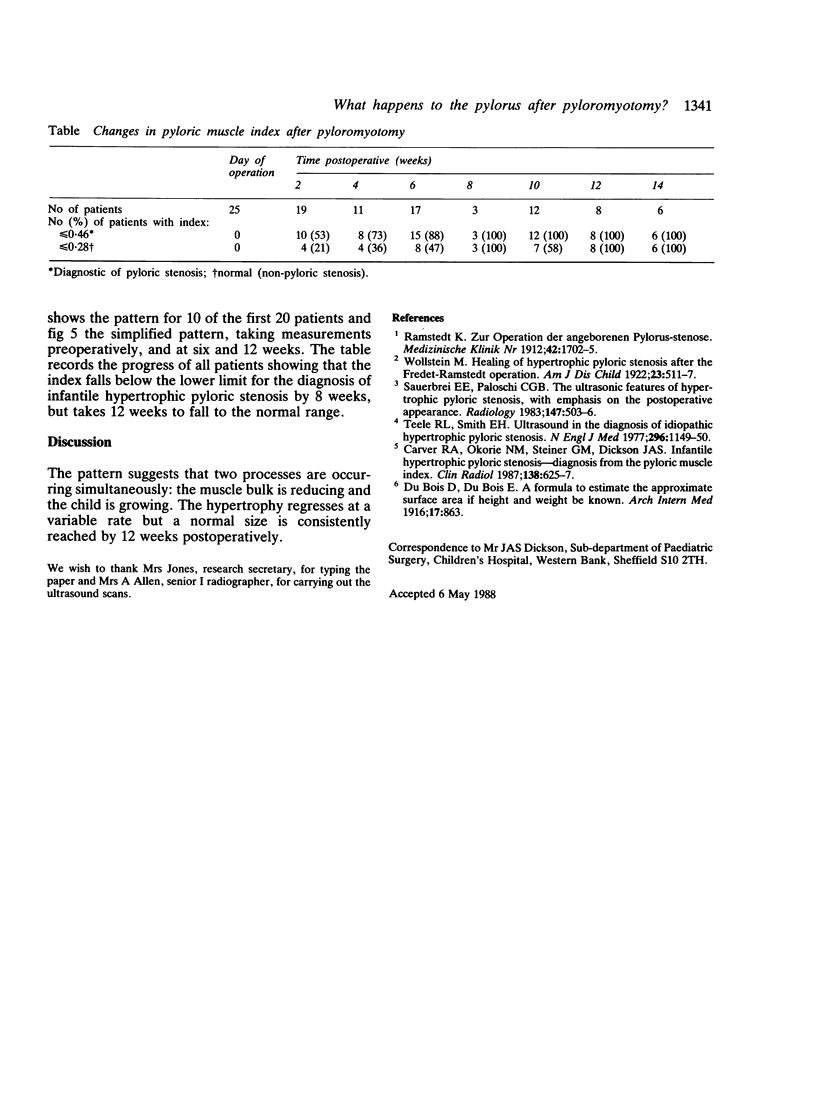Abstract
The rate of return to normal of the pylorus muscle in infantile hypertrophic pyloric stenosis was measured by ultrasound, using a simple pyloric volume calculation and a pyloric muscle index. The muscle hypertrophy took from two to 12 weeks to resolve.
Full text
PDF


Selected References
These references are in PubMed. This may not be the complete list of references from this article.
- Carver R. A., Okorie M., Steiner G. M., Dickson J. A. Infantile hypertrophic pyloric stenosis--diagnosis from the pyloric muscle index. Clin Radiol. 1987 Nov;38(6):625–627. doi: 10.1016/s0009-9260(87)80342-2. [DOI] [PubMed] [Google Scholar]
- Sauerbrei E. E., Paloschi G. G. The ultrasonic features of hypertrophic pyloric stenosis, with emphasis on the postoperative appearance. Radiology. 1983 May;147(2):503–506. doi: 10.1148/radiology.147.2.6836130. [DOI] [PubMed] [Google Scholar]
- Teele R. L., Smith E. H. Ultrasound in the diagnosis of idiopathic hypertrophic pyloric stenosis. N Engl J Med. 1977 May 19;296(20):1149–1150. doi: 10.1056/NEJM197705192962006. [DOI] [PubMed] [Google Scholar]


